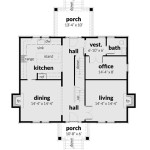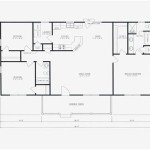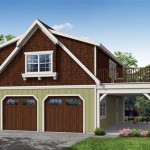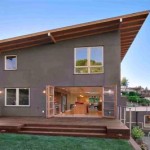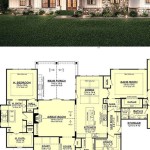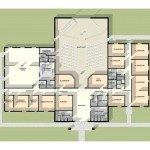Maximizing Space: A Comprehensive Guide to 600 Square Feet Floor Plans
The challenge of designing a comfortable and functional living space within a 600 square feet floor plan demands careful consideration and strategic planning. This size, often associated with apartments or small homes, necessitates a focus on efficient space utilization, multi-functional furniture, and clever storage solutions. This is often the first home or apartment for many people. The ultimate goal is to create a living environment that feels spacious, organized, and tailored to the resident's needs and lifestyle.
Successfully navigating a 600-square-foot living area requires an understanding of design principles, an awareness of space-saving techniques, and a clear vision for the desired aesthetic. The approach must be holistic, considering not just the layout of furniture, but also the impact of lighting, color palettes, and vertical space. This article will explore key considerations for maximizing space, optimizing functionality, and creating a comfortable living environment within a 600 square feet floor plan.
Prioritizing Needs and Defining Functionality
Before delving into specific layouts or furniture choices, it is crucial to identify the occupant's core needs and desired functionalities within the 600 square feet space. This involves asking key questions about lifestyle, hobbies, work habits, and entertainment preferences. For instance, is a dedicated workspace essential, or can a multi-purpose surface suffice? Does the occupant frequently entertain guests, requiring ample seating, or is the space primarily for solitary living? Understanding these priorities is critical for determining how best to allocate the limited square footage.
Consider the number of occupants as well. A single person's requirements will differ vastly from those of a couple or a small family. A single individual might prioritize a large living area and a minimalist kitchen, while a couple might prioritize a functional kitchen and adequate storage space. Families with young children need to consider play areas and child-friendly storage. These factors significantly influence the design choices.
Once needs are identified, they need to be prioritized. Not everything can fit within the limited square footage. Rank each need based on importance. High-priority needs are the ones that will be accommodated first, while lower-priority needs may require creative solutions or compromises. This prioritization process forms the foundation for a functional and customized design.
Optimizing Layout and Spatial Configuration
The layout of a 600 square feet floor plan determines the flow of movement, the functionality of different zones, and the overall feeling of spaciousness. Choosing the right layout is paramount. Open-concept layouts are frequently preferred for maximizing available space. This approach combines the living, dining, and kitchen areas into a single, fluid space, creating a sense of openness and connectivity. However, it requires careful planning to delineate distinct zones within the shared space.
Zoning can be achieved through various methods. Furniture placement is a simple and effective way to define areas. A sofa can define the living area, a dining table can define the dining area, and a kitchen island can separate the kitchen from the living space. Rugs can also be used to visually define different zones. The strategic use of color and texture can further enhance zoning, separating each area.
Beyond the open-concept layout, consider linear or galley-style layouts. These are common in smaller apartments and can be efficient in optimizing space. Hallways should be minimized and replaced with open transitions between rooms. The positioning of doors and windows also plays a role in optimizing space. Ensure they do not obstruct pathways or limit furniture placement. Finally, consider vertical space. High ceilings can be leveraged to create a sense of spaciousness and allow for the installation of loft beds or storage solutions.
Selecting Multi-Functional Furniture and Smart Storage Solutions
Given the limited square footage, multi-functional furniture is essential for maximizing space and functionality. This type of furniture serves multiple purposes, effectively reducing the need for separate pieces and freeing up valuable floor space. It can be anything from a sofa bed, to an ottoman with storage, to a dining table that can be folded up and stored away.
Choose furniture that offers dual functionality. A sofa bed can serve as both a seating area and a guest bed. Coffee tables with built-in storage can hide clutter and offer a surface for drinks and snacks. Dining tables with drop-leaf extensions can expand to accommodate guests and then be reduced in size when not in use. Consider modular furniture that can be reconfigured to suit different needs and occasions. These pieces can be easily rearranged to create a new layout or accommodate visitors.
Beyond multi-functional furniture, smart storage solutions are crucial for maintaining a clutter-free and organized living space. Vertical storage is a key strategy. Shelving units, wall-mounted cabinets, and tall wardrobes maximize vertical space and provide ample storage for books, clothing, and other belongings. Utilize overlooked spaces, like the area beneath the bed or the space above doorways, to create additional storage. Declutter regularly to avoid accumulating unnecessary items. The fewer items in the space, the more spacious it will feel. Consider using storage containers to organize belongings and keep them out of sight.
Consider utilizing wall space for storage. Shelves can store books, decorative objects, and other items. Wall-mounted cabinets can be used to store kitchen supplies, linens, or other belongings. Hooks can be used to hang coats, bags, or other items. Mirrors contribute to creating a sense of spaciousness. Placing mirrors strategically throughout the space can reflect light and make the room feel larger.
In the kitchen, consider using pot racks to store cookware and clear up cabinet space. Utilize drawer organizers to maximize space and keep items organized. Consider using a rolling kitchen cart to provide additional counter space and storage. In the bathroom, utilize over-the-door organizers to store toiletries and other items. Consider using a shower caddy to keep shower essentials organized. Utilize shelves under the sink to store cleaning supplies and other items.
Ultimately, designing a functional and comfortable 600-square-foot living space requires a thoughtful and strategic approach. By prioritizing needs, optimizing layout, and embracing multi-functional furniture and smart storage solutions, it is possible to create a living environment that is both spacious and tailored to the resident's lifestyle.

600 Sq Ft House Plan Small Floor 1 Bed Bath 141 1140

600 Sqft House Plans 2 Bedroom 10x60 Houseplans 20x30 30x20

Panther Plan 600 Sq Ft

600 Sq Ft House Plan Mohankumar Construction Best Company

600 Sqft House Plan

1 Bed Home Plan Under 600 Square Feet 560020tcd Architectural Designs House Plans

House Plan Design Ep 63 600 Square Feet 2 Bedrooms Layout

600 Sqft House Plans 2 Bedroom 10x60 Houseplans 20x30 30x20

600 Square Feet Small And Simple Residence With Floor Plans Inkarch Associates

600 Sq Ft House Plans 2 Bedroom N Style Home Designs Проекты небольших домов План дома Дизайн

